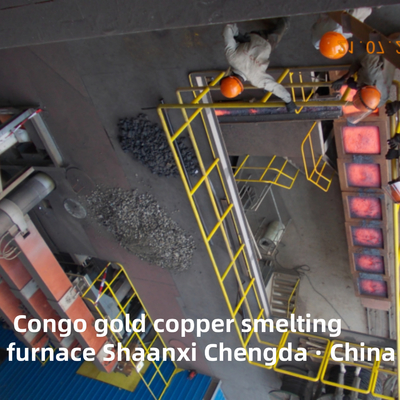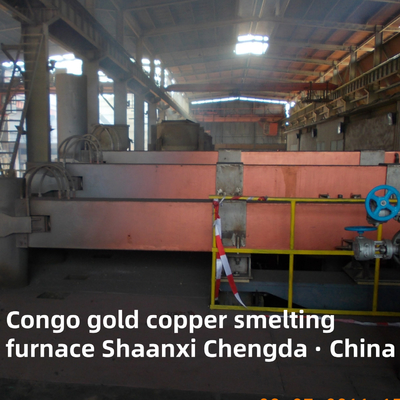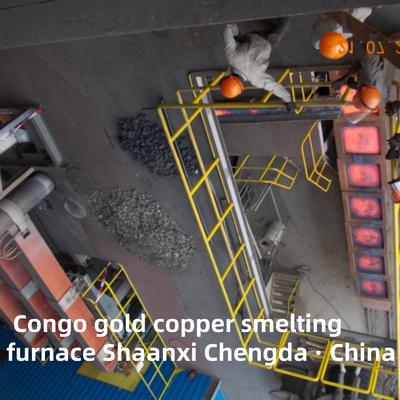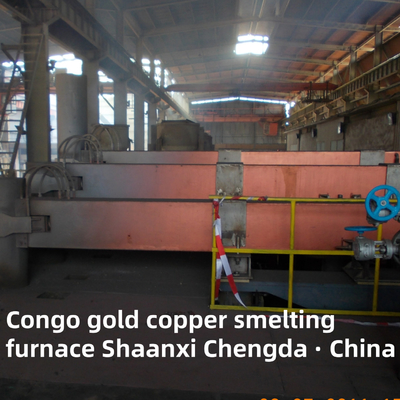-
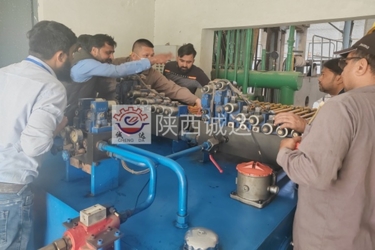 Syed Rashid Ahmed ButtShaanxi Chengda Industrial Furnace Co., Ltd. completed the commissioning of electric arc furnace, the workers carefully cooperated with Chengda engineers to learn and operate the equipment, showing the deep friendship and excellent cooperation between the people of China and Pakistan.
Syed Rashid Ahmed ButtShaanxi Chengda Industrial Furnace Co., Ltd. completed the commissioning of electric arc furnace, the workers carefully cooperated with Chengda engineers to learn and operate the equipment, showing the deep friendship and excellent cooperation between the people of China and Pakistan. -
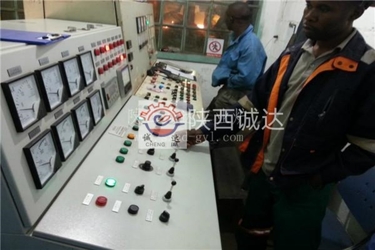 AboubacarAfter more than 1 month of intense production and debugging, 2 sets of heat exchange flue gas settling chamber equipment has been successfully put into operation ~ All the personnel involved in the project have worked hard! ~
AboubacarAfter more than 1 month of intense production and debugging, 2 sets of heat exchange flue gas settling chamber equipment has been successfully put into operation ~ All the personnel involved in the project have worked hard! ~ -
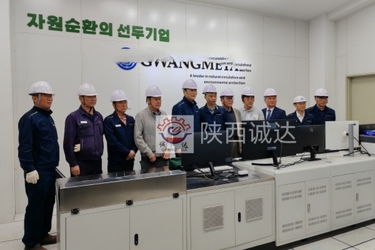 Ji-hwan【 Warm congratulations 】 Shaanxi Chengda Industrial Furnace Manufacturing Company in South Korea, North Chungcheong County precious metal smelting furnace equipment installation and careful manufacturing and strict commissioning, looking forward to the future in more fields to achieve mutually beneficial win-win cooperation!
Ji-hwan【 Warm congratulations 】 Shaanxi Chengda Industrial Furnace Manufacturing Company in South Korea, North Chungcheong County precious metal smelting furnace equipment installation and careful manufacturing and strict commissioning, looking forward to the future in more fields to achieve mutually beneficial win-win cooperation!
TOP8 Copper Smelting Furnace equipment
| Place of Origin | Shaanxi, China |
|---|---|
| Brand Name | Shaanxi Chengda · China |
| Certification | ISO9001 |
| Model Number | Congo gold and copper smelting furnace |
| Minimum Order Quantity | 1set |
| Price | The price and specific specifications are negotiable. |
| Packaging Details | Discuss according to the specific requirements of Party A |
| Delivery Time | 2 months |
| Payment Terms | L/C,D/A,D/P,T/T,Western Union,MoneyGram |
| Supply Ability | Complete production supply chain, supply on time, and meet quality standards |

Contact me for free samples and coupons.
WhatsApp:0086 18588475571
WeChat: 0086 18588475571
Skype: sales10@aixton.com
If you have any concern, we provide 24-hour online help.
x| Type | Congo Gold And Copper Smelting Furnace | Core Component Shelf Life | 1year |
|---|---|---|---|
| Country Of Origin | Shaanxi, China | Terms Of Delivery | New |
| Highlight | Gold copper smelting furnace,Congo copper smelting furnace,Copper gold smelting furnace |
||
Congo gold and copper smelting furnace
Equipment use description:
Copper smelting furnace is a kind of key equipment used in copper smelting process. It is heated by electric energy to melt copper bearing charge into crude copper, copper matte or other copper products in the furnace.
Working principle:
The working principle of copper smelting electric furnace is based on the electric heating effect. When the current passes through the electrode, there is an arc between the electrode and the charge, and the high temperature of the arc makes the charge melt. At the same time, the resistance of the charge also generates heat, which further facilitates the smelting process. In the smelting process, the copper element in the charge reacts with other components to form crude copper, matte, slag and other products.
High efficiency:
1.Electric furnace copper smelting has the characteristics of high heat utilization rate, can quickly melt the charge.
2. Environmental protection: Compared with traditional copper smelting methods, the smoke amount of copper smelting in electric furnace is small and the smoke temperature is low, which is conducive to environmental protection.
3. Flexibility: electric furnace copper smelting can handle a variety of copper bearing charge, including refractory charge, oxide ore, sulfide ore, copper-bearing tailings, copper mud, etc...
Product process description:
1. Raw material preparation: First, prepare the charge containing copper, usually copper concentrate. These concentrates need to be prepared before refining, such as drying, pelleting, etc., to ensure that the moisture content of the furnace material is moderate, to avoid accidents such as tipping in the smelting process
2. Ingredients and flux adding: The prepared copper concentrate is mixed with appropriate amount of flux, the function of flux is to promote the chemical reaction of the charge in the melting process and the separation of impurities
3. Electric furnace heating and melting: the prepared charge is added to the mineral thermal electric furnace, electric arc and resistance heat are generated through the electrode, so that the charge is melted under the action of electric heating. In the molten pool, the charge will complete various chemical reactions to produce copper matte, slag and other products;
4. Impurity separation: In the melting process, by controlling the temperature and adding chemicals, various impurities (such as arsenic, iron, sulfur, etc.) in the copper pool float on the surface of the liquid copper pool, and discharge it in an appropriate way to purify the copper liquid;
5. Cooling and casting: after impurity separation, the obtained crude copper liquid or copper sulfur is cooled, and then cast into the required copper ingot or copper billet.
Equipment composition:
1.Furnace body;
2.Furnace lining;
3.Water cooling furnace cover;
4.Electrode lifting system;
5.Hydraulic system;
6.Short network system;
7.Water tank and water dispenser;
8.Copper mold;
9.Electric furnace transformer;
10.High voltage switch cabinet;
11.Electric furnace control system.



